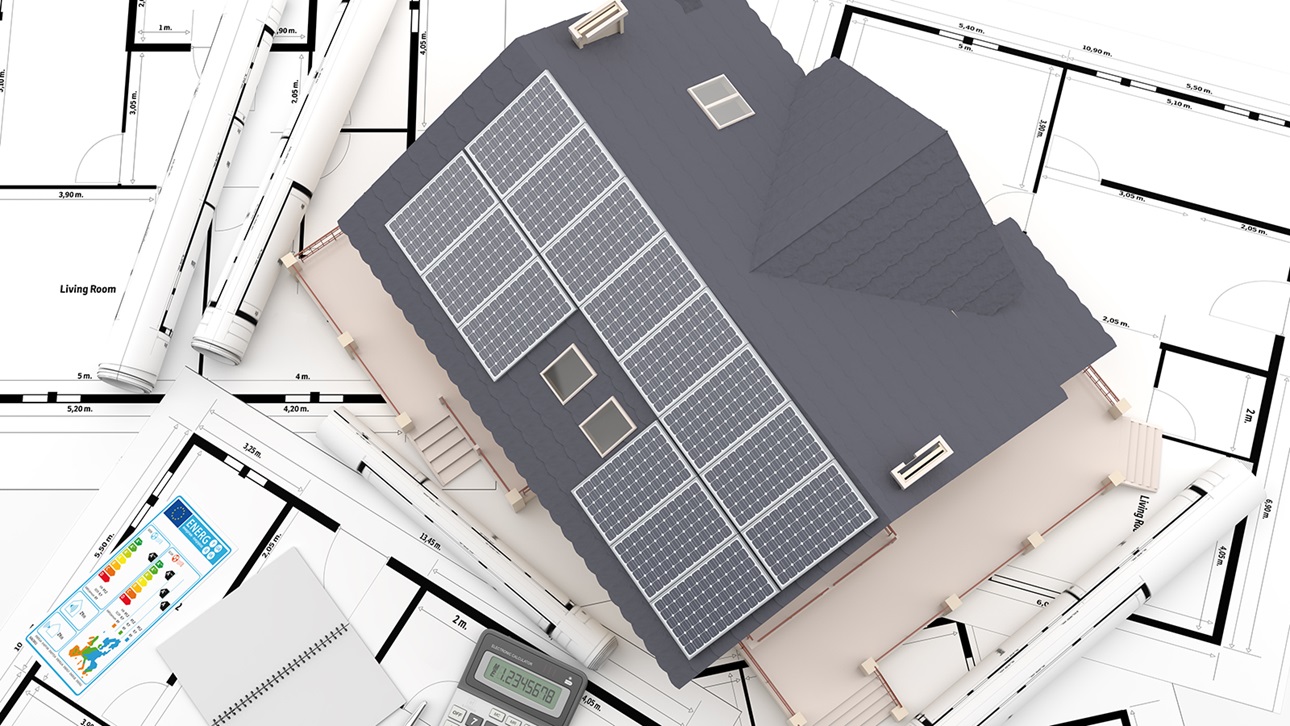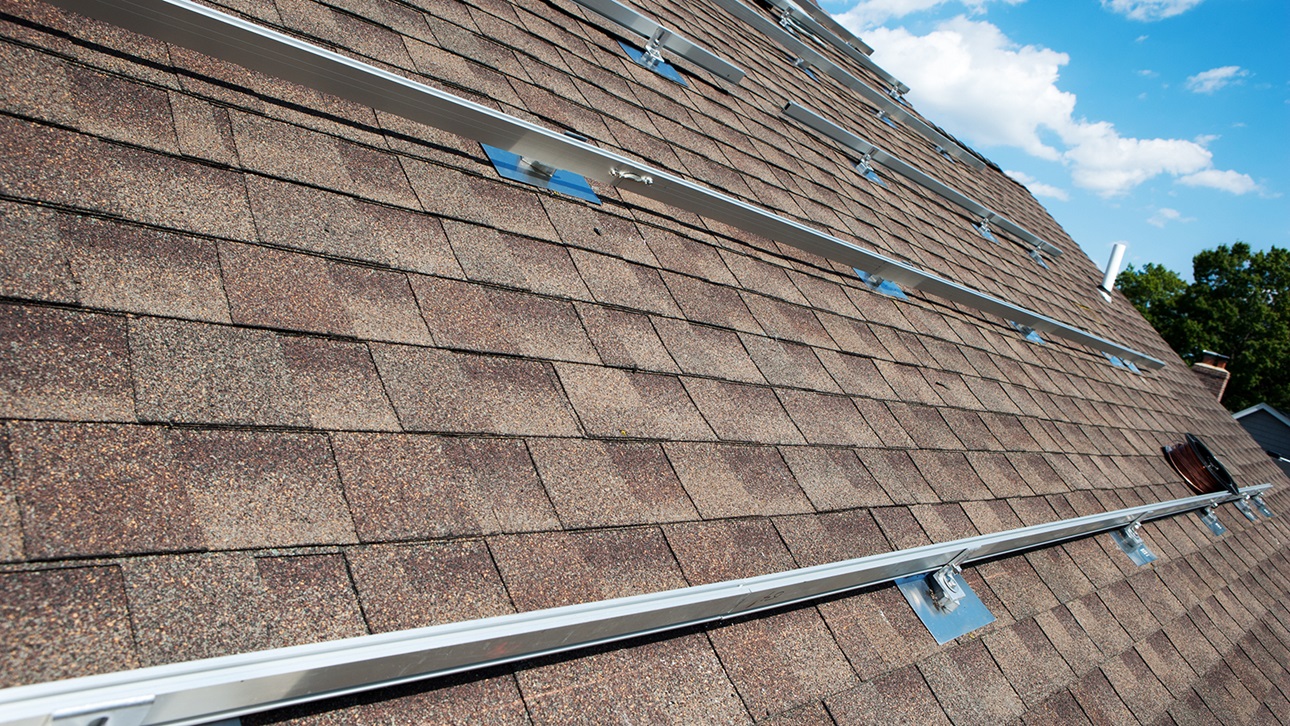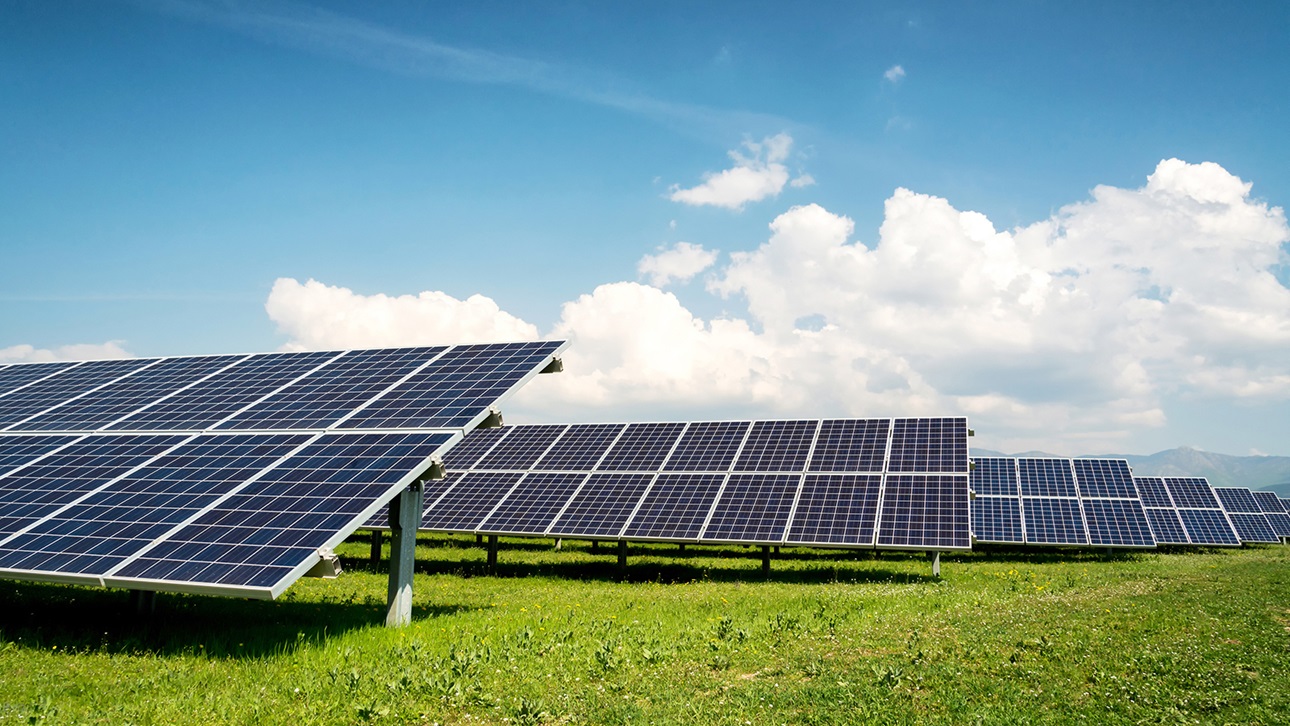Solar: The Basics

A solar photovoltaic (PV) system uses an array of panels to convert sunlight to a home’s electrical load, exporting any excess energy produced from the system to the utility’s grid infrastructure.
Panels
Solar panels are made up of individual solar cells that convert sunlight into direct current (DC) electricity. The higher the wattage of the panel, the more the capacity increases as the physical size of the array stays the same. For instance, if you had twenty 425-Watt panels, the system size would be 8.5 kilowatts (425 x 20 = 8,500 W or 8.5 kW).
Monocrystalline solar panels are made from silicon wafers from a single crystal and are generally capable of higher efficiencies.
Polycrystalline solar panels contain cells that are melted together from multiple fragments of silicon (instead of a single crystal) and are not as efficient, but often have a lower price than monocrystalline panels.
Inverters
Inverters convert Direct Current (DC) electricity to Alternating Current (AC) electricity, which is what we use in our homes. Inverters shut off when power from the utility goes down to keep utility workers safe.
Central inverters are usually located in the basement or garage near the electrical panel, or outside. Panels are tied together in “strings,” which are wired into one inverter (or more depending on the system size).
Microinverters go underneath each panel and convert the electricity from DC to AC at the panel level. They are good for sites with shading because of their ability to operate independently of one another. If a central inverter is used, even a small amount of shading will be detrimental to PV system production, since that shading will affect the entire string of panels that are tied together
Electric Panel
The electric panel feeds the electricity from the solar panels to the load in the home or sends excess electricity out to the utility lines if the building is not using all the electricity that was produced. The electric panel will also draw extra power if needed from the utility if the solar PV system does not produce enough to meet the building’s demand.
Meters
Production meters measure how much electricity the system produces over time in kilowatt hours (kWh).
Utility net meters spin backwards and forwards (also known as a bi-directional meter) depending on if the house is pulling electricity from the grid or if the system is sending excess electricity to grid.
Racking
Racking is used with attachments to secure the panels to the roof or to a ground-mounted system. There are many types of roof attachments for different roofing materials (shingles, metal, clay tiles, etc.).
Roof-Mounted System

A roof-mounted system typically has long rails that go across the length of the roof, with flashing to protect the roof penetrations from inclement weather.
Ground-Mounted System

A ground mount has a racking system that supports panels on the ground. Utility-scale projects tend to be ground-mounted systems. Or, if a home doesn’t have the solar access needed on the roof, a home owner could choose to do a small ground-mount project.
Ballasted System

Ballasted systems are common for flat roofs; the racking is held down by concrete blocks, and no roof penetrations are necessary.



